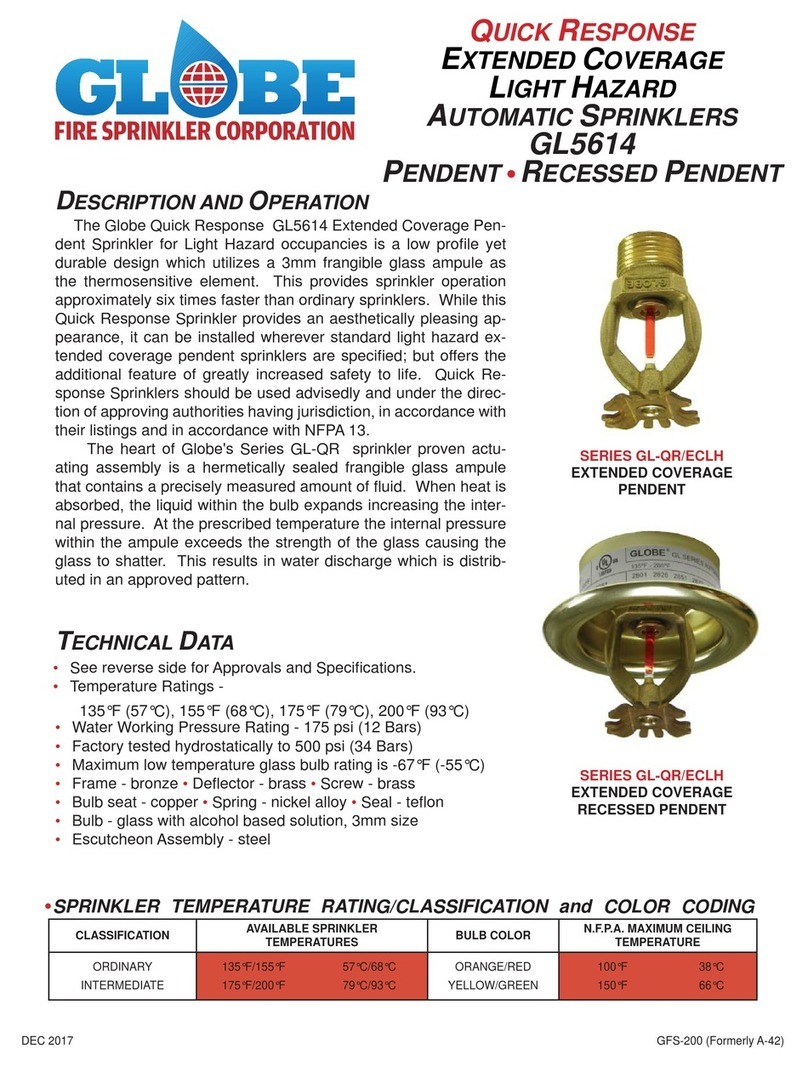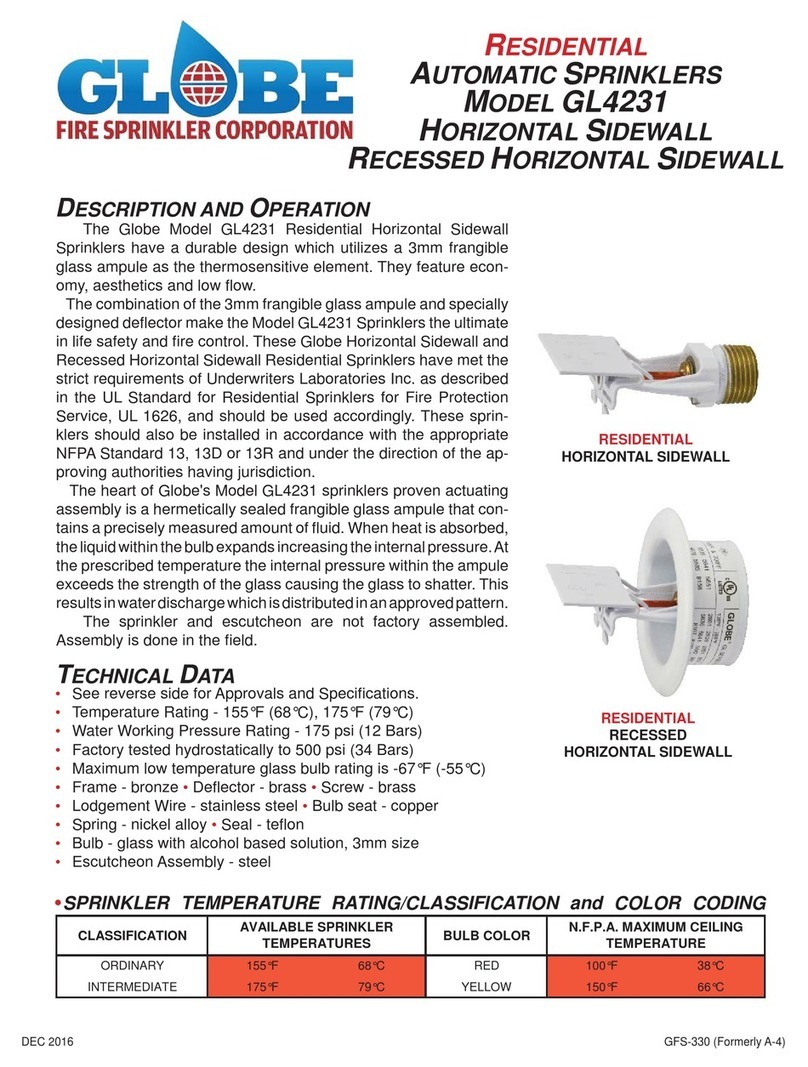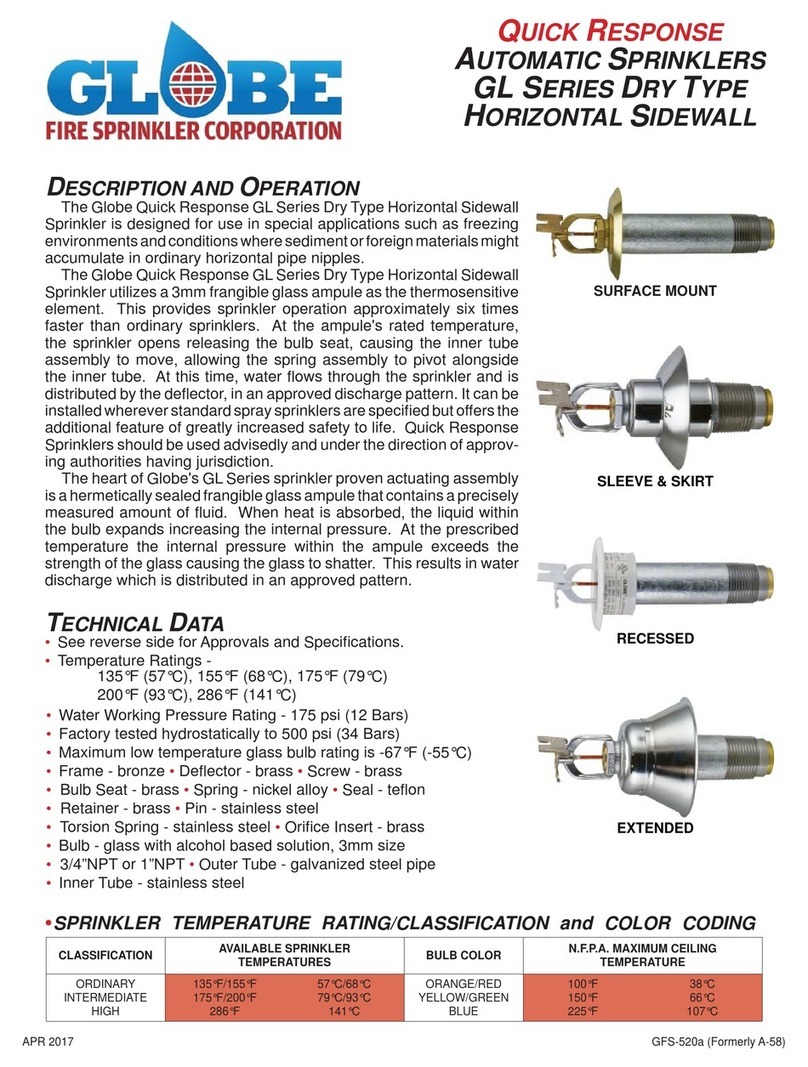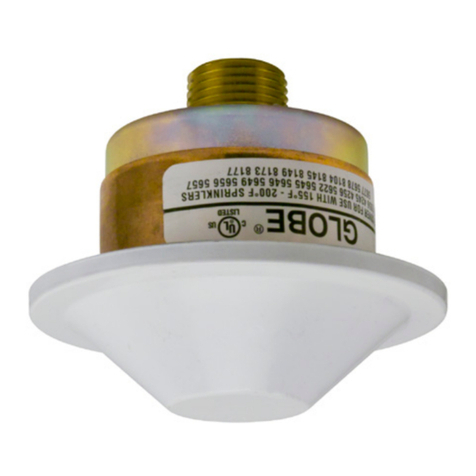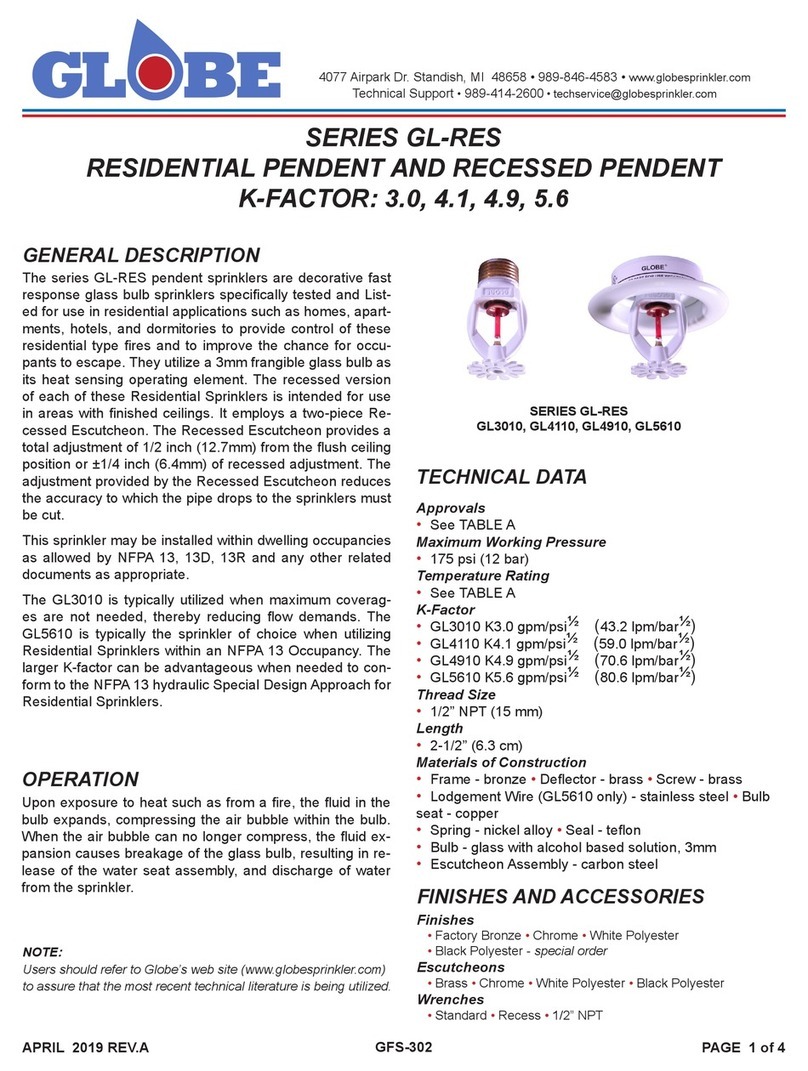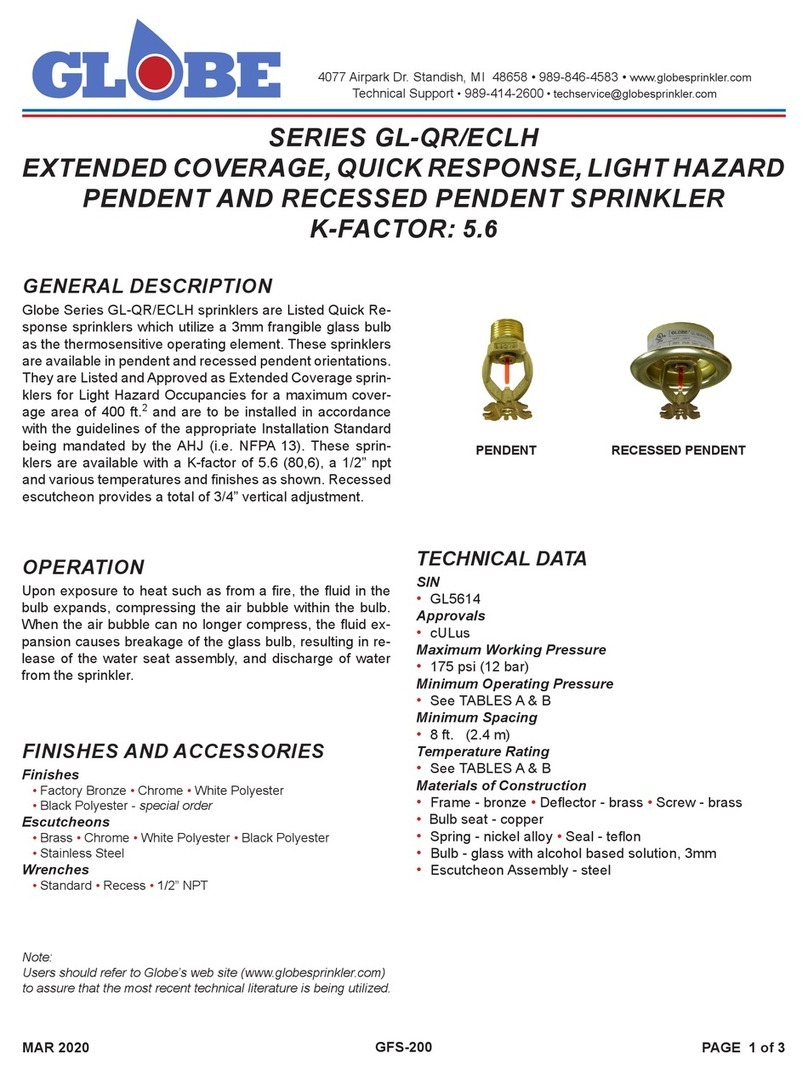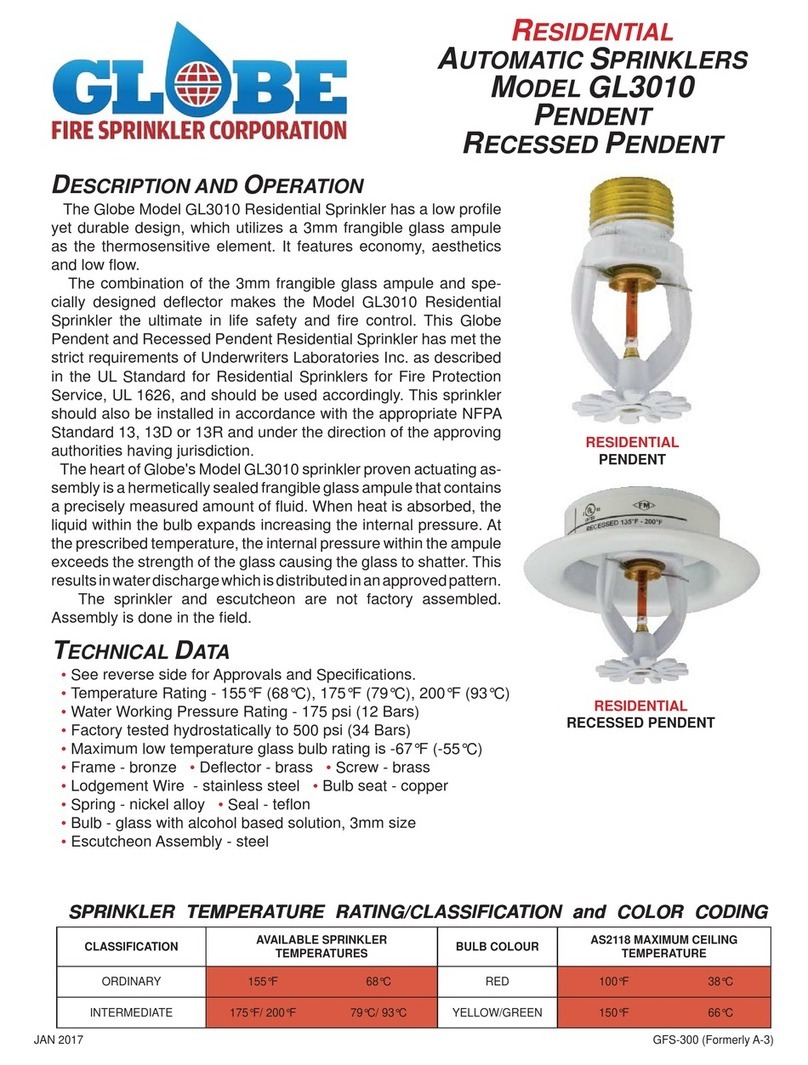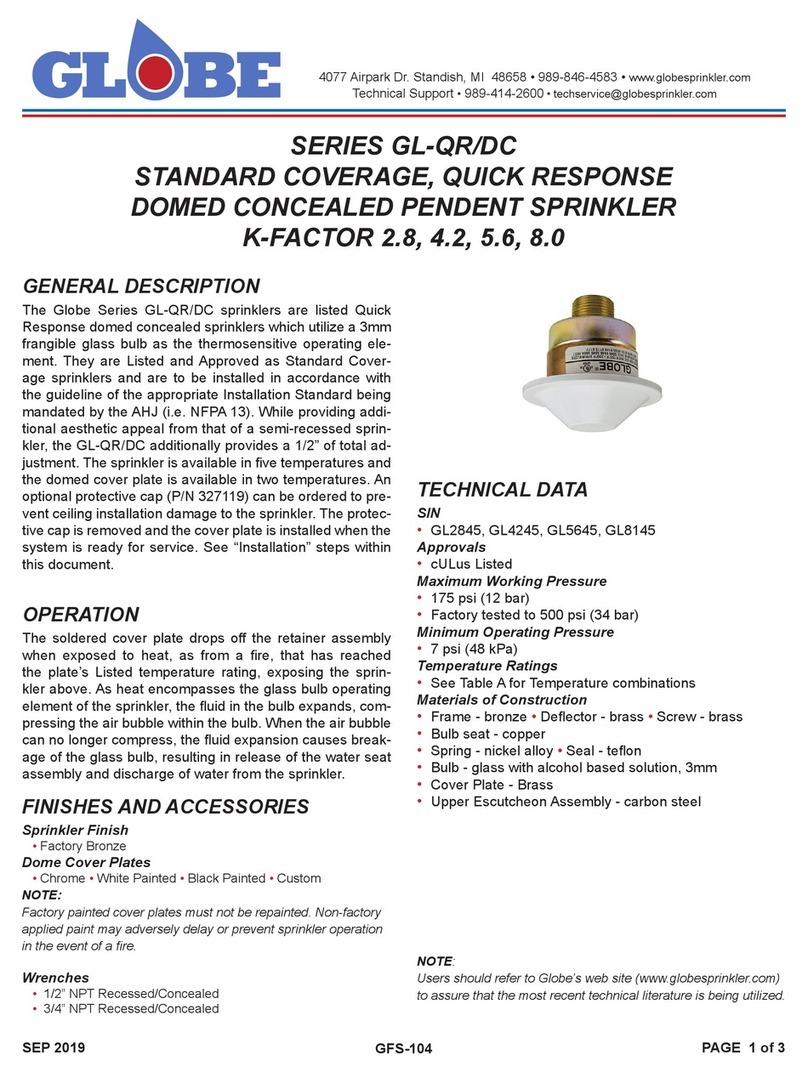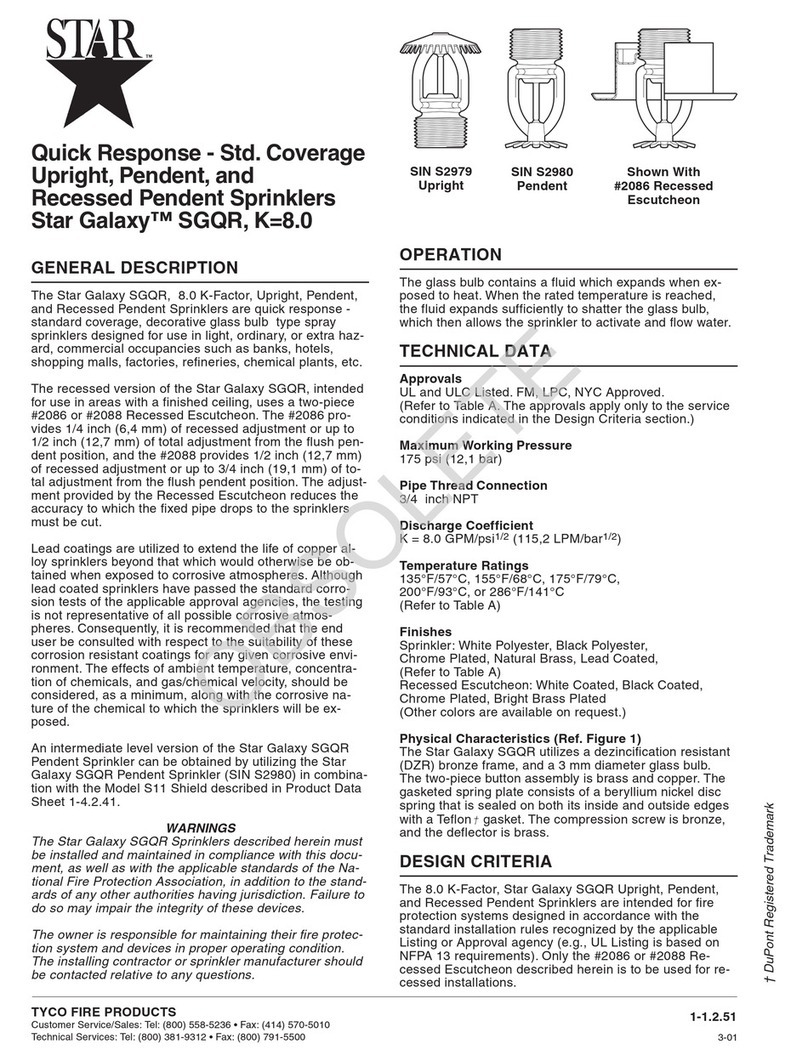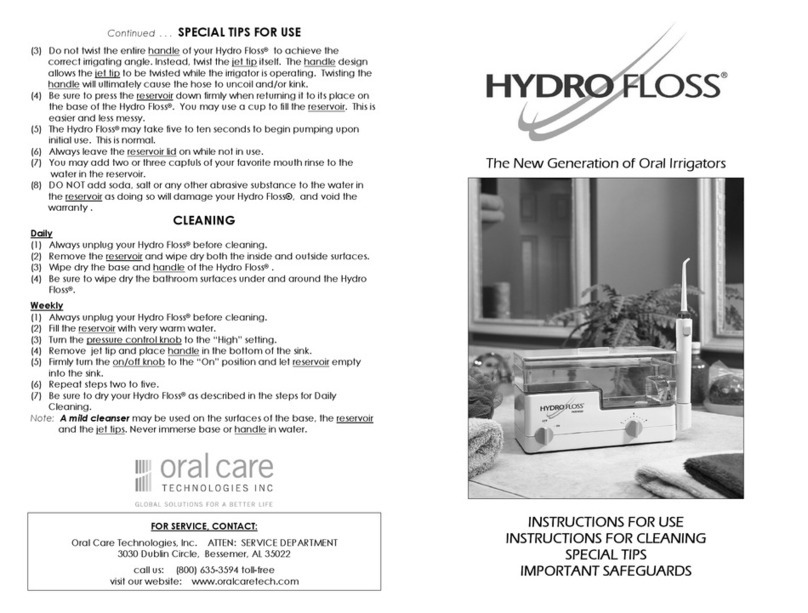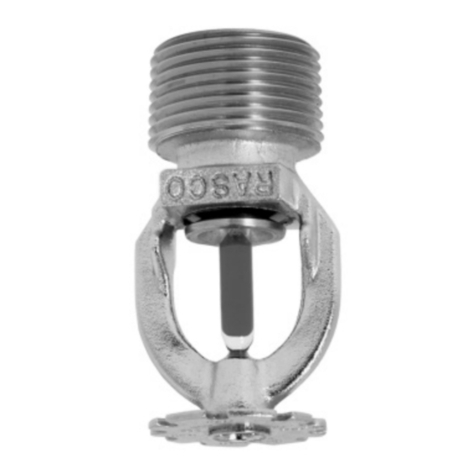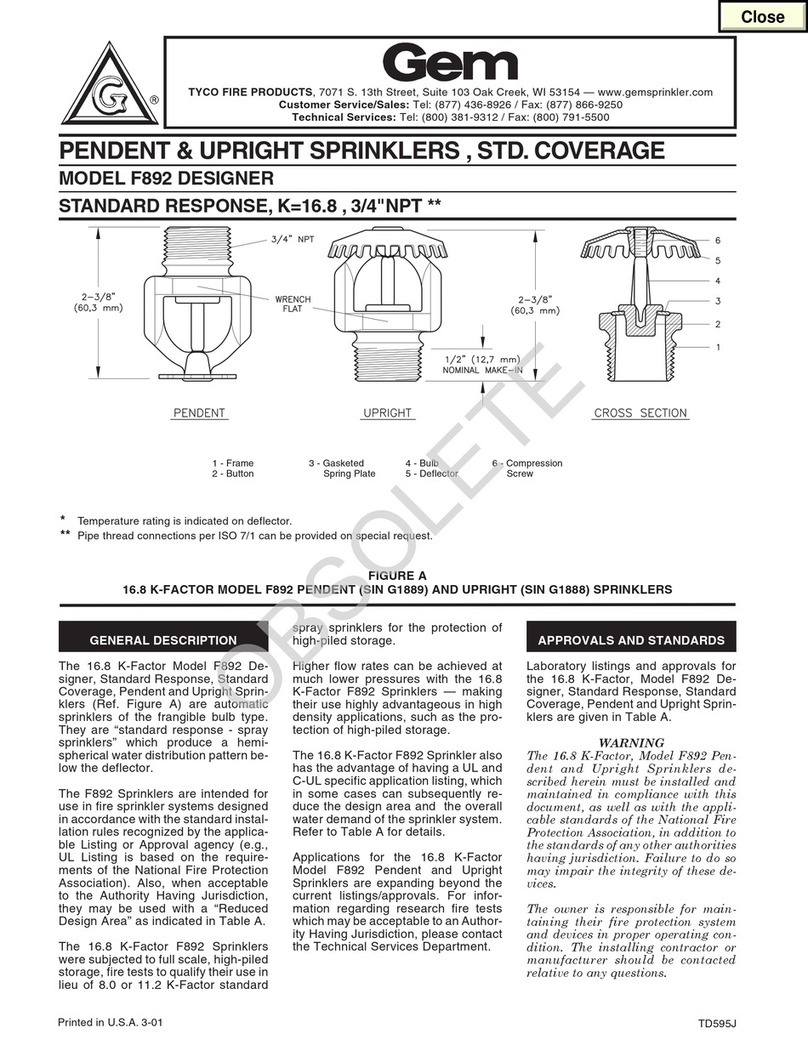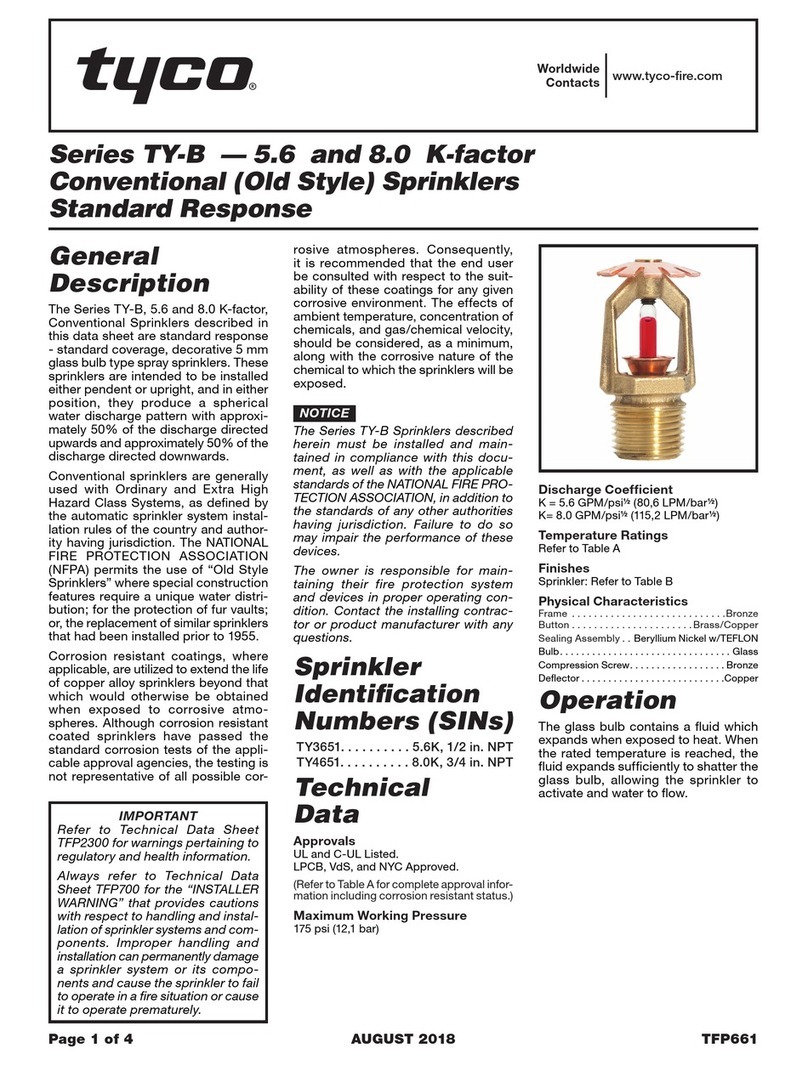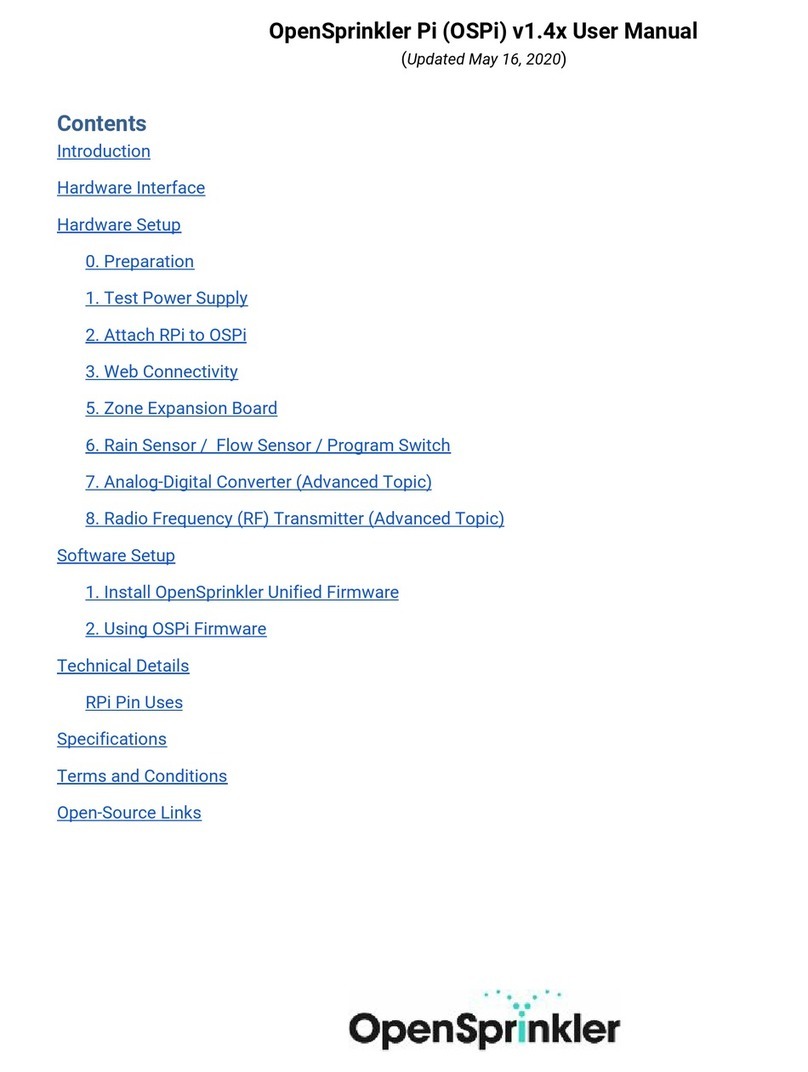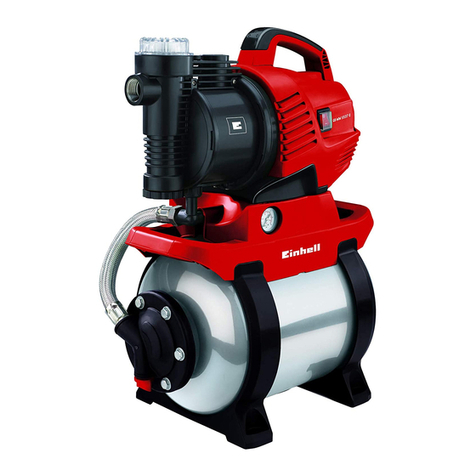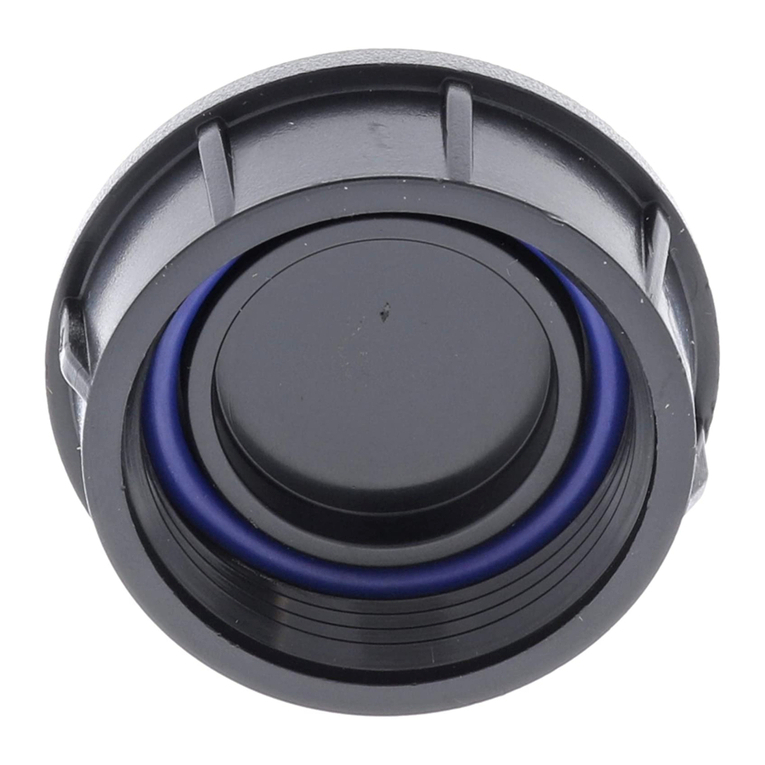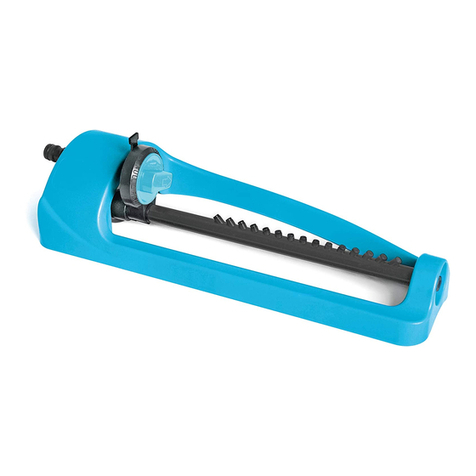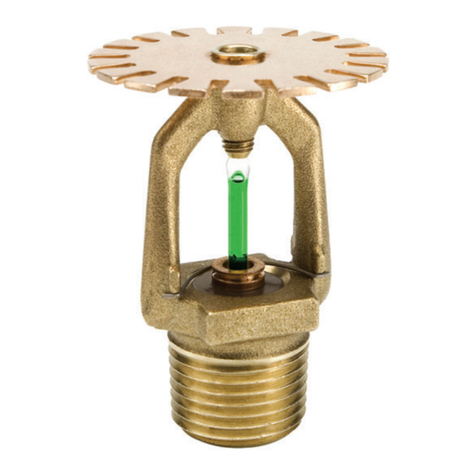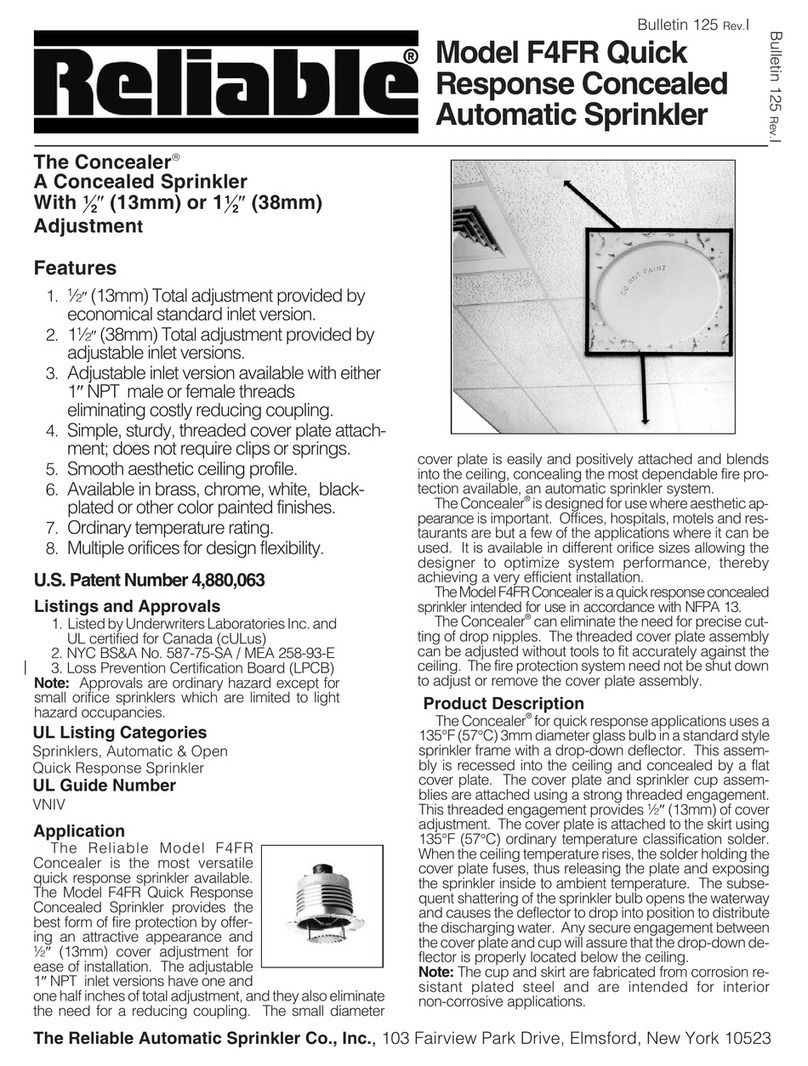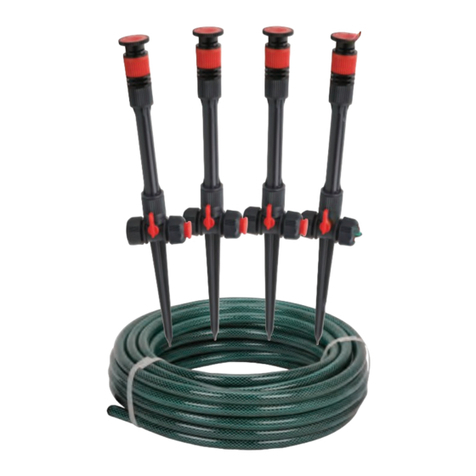
APRIL 2019 REV. A GFS-332 PAGE 3 of 4
NOTICE
Do not install any bulb-type sprinkler if the bulb is cracked or
there is loss of liquid from the bulb. Sprinklers should be tightened
enough to obtain a leak-tight joint when water pressure is applied
and/or hydrostatic test is performed. Sprinklers should not be
overtightened as this can result in distortion and subsequent leak-
age. It is recommended not to exceed 14 ft.-lb. (19.0 Nm) torque
for 1/2 inch NPT sprinkler threads.
FIGURE 2: STANDARD WRENCH
P/N 325390
4077 Airpark Dr. Standish, MI 48658 • 989-846-4583 • www.globesprinkler.com
Technical Support •989-414-2600 •techservice@globesprinkler.com
CARE AND MAINTENANCE
Step1. Sprinklers must be properly oriented.
Step2. With pipe thread sealant applied to the pipe
threads, hand tighten the sprinkler into the sprin-
kler tting. Note: Do not grasp the sprinkler by
the deector.
Step3. Wrench-tighten the sprinkler using only the
appropriate wrench. Wrenches are only to be
applied to the sprinkler wrench ats or wrench
hex as applicable. Note: Do not apply wrench to
frame arms.
INSTALLATION
Prior to installation, it is important to read and follow the
“Sprinkler Caution” sheet (GFS-840) included within each
box of sprinklers. This sheet is available on Globe’s web
site (www.globesprinkler.com).
Always obtain permission from the proper authorities to
shut down the affected re protection system and notify all
personnel who may be affected by this action before closing
a re protection system main control valve for maintenance
work on the system that it controls.
Sprinklers should only be cleaned by means of gently dust-
ing with a feather duster; otherwise, non-operation in the
event of a re or inadvertent operation may result.
Store sprinklers in a cool, dry place. Exposure to extreme
heat will damage the thermal sensing element, possibly re-
sulting in premature activation. Avoid direct sunlight.
Replace any sprinkler that shows any corrosion, damage,
or loss of liquid from the glass bulb.
Do not attempt to paint or alter the sprinkler’s coating in any
manner after leaving the manufacturing plant.
Do not attach wiring, ropes, decorations or xtures to a
sprinkler.
Absence of an escutcheon, used to cover a ceiling hole,
may delay sprinkler operation in a re situation.
It is the owner’s responsibility for inspection, testing and
maintenance of the re sprinkler system with all components
and devices in accordance with the National Fire Protection
Association Pamphlet 25 as well as any other requirements
as set forth by the local Authority Having Jurisdiction (AHJ).
FIGURE 3: RESIDENTIAL SIDEWALL
RECESSED WRENCH
P/N 327102
